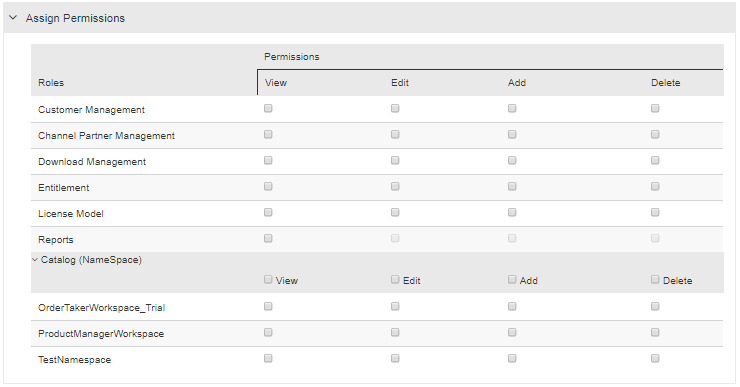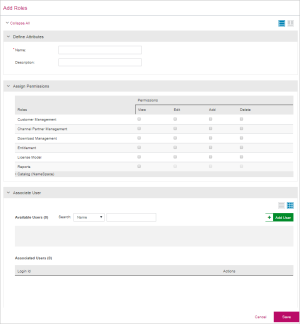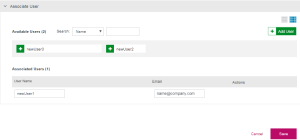Roles
|
New to Sentinel EMS?
|
|
What is a Role?
A role is a set of permissions for using different entities in Sentinel EMS. You can assign roles to users so that they can log in to the Sentinel EMS portal. Roles are customizable, and you can create roles according to your requirements.
Separate roles can be created for various teams in your organization responsible for different entitlement management activities, such as product management, sales, order generation, fulfillment, and customer support. You may also choose to create a generic role for each team or you can create more specific roles for users.
Examples of roles are:
>Product Manager: Can be given exclusive permission to create new features, products, and downloads. This role may or may not have permissions to view the details of generated orders.
>Order Taker: Can be given permission to generate orders (entitlements).
>Customer Manager: Can be given permission to manage customers and contacts.
>Care Executive: Can be given permission to view certain reports and entity details.
Role Status
The Status attribute available on the Roles page specifies the following status of a role:
>Enabled: The role is available when creating a user.
>Disabled: The role is not available when creating a user.
Prerequisites for Creating a Role
The following is the prerequisites for creating a role:
>A user with administrative rights can create a role.
Creating a Role
From the navigation pane, select User Management> Roles to view the Roles page. The Add Role button on this page is used to create a role using the page given below:
Role Attributes
The following table explains the attributes that are used to create a role:
| Attribute | Description | Required/Optional | Valid Values |
|---|---|---|---|
| Name | Name for the role. | Required |
>Alphanumeric >1 to 50 characters |
| Description | Additional information about the role. | Optional |
>Alphanumeric >0 to 500 characters |
Assign Permissions
After providing the attribute details, use the Assign Permissions pane displayed below to assign permissions to the role you are creating:

The points to remember when you assign permissions with a role:
>You can create a role without associating permissions. Later, you can assign permissions using the Edit action.
>Role permissions are categorized as follows:
•The entity level permissions provided for entities such as, Entitlement, License Model, Customer Management, and Download Management. You can assign View, Edit, Add, and Delete permissions to these entities.
•The catalog level permissions, which are regulated by assigning permissions to namespaces. You can assign view, edit, add, and delete permissions with a role on different namespaces. To assign identical permissions to all namespaces, select the check box in the Catalog (Namespace) row.
Associate Users
After providing the attribute details and assigning permissions, use the Associate Users pane displayed below to associate users with the role you are creating:
When you associate a user with a role:
>You can create a role without associating a user.
>Use the Add User button in this pane to create a new user and associate it with the role. SeeUsers for more information on managing users.
>Click ![]() for an associated user to remove it from the Associated Users list.
for an associated user to remove it from the Associated Users list.
Actions for a Role
The following table lists the actions available for roles:
| Action | Description | ||
|---|---|---|---|
|
Update information for an existing role. Note: You cannot edit a user association with a role if you are using Sentinel EMS with Active Directory authorization. |
||
|
Delete a role. |
||
|
Disable a role. | ||
|
Enable a disabled role. |

